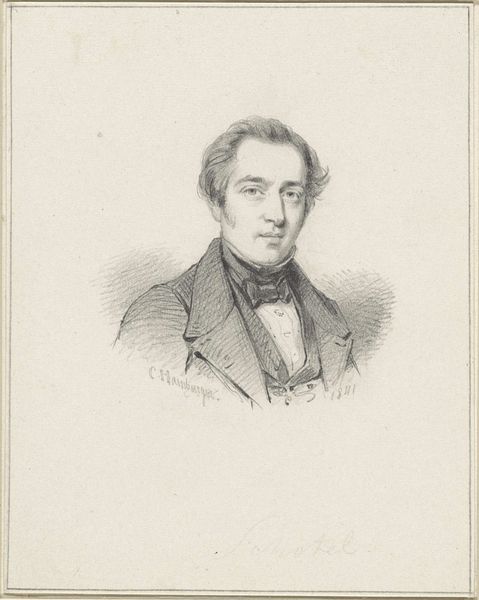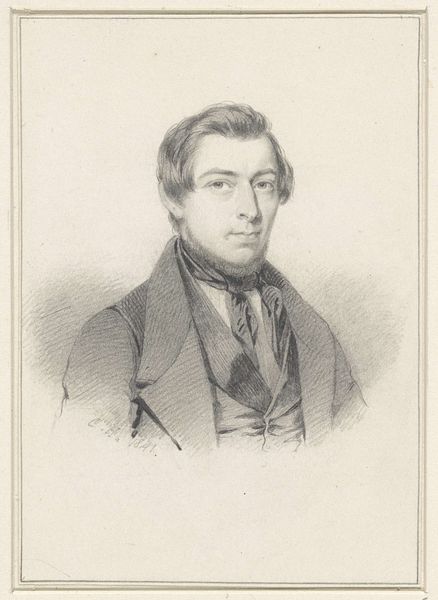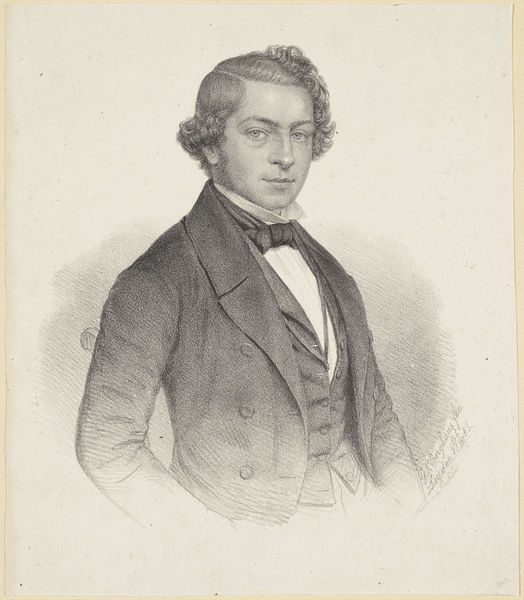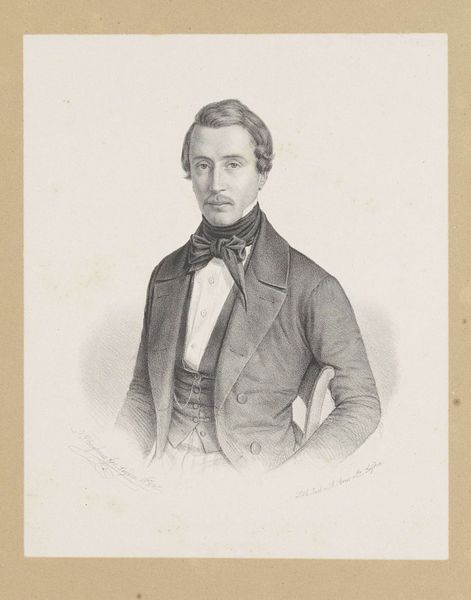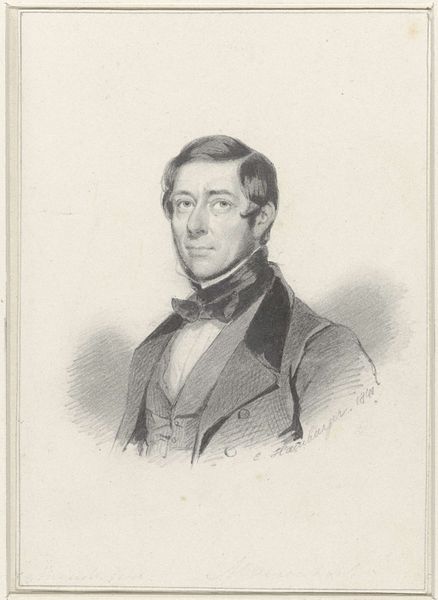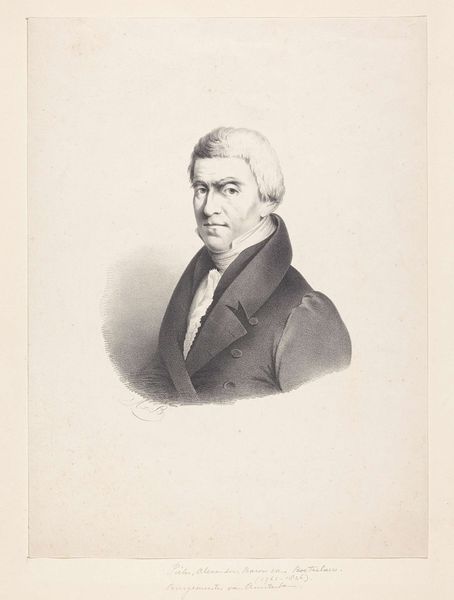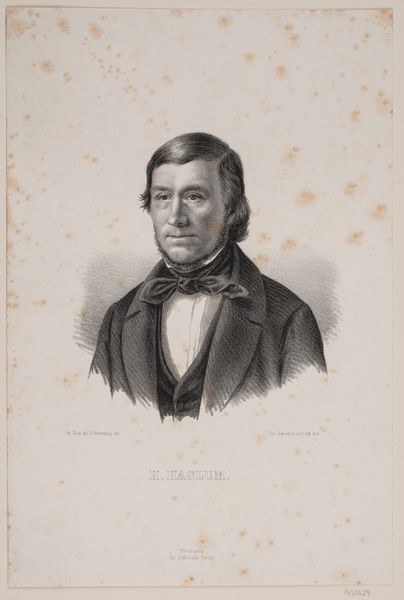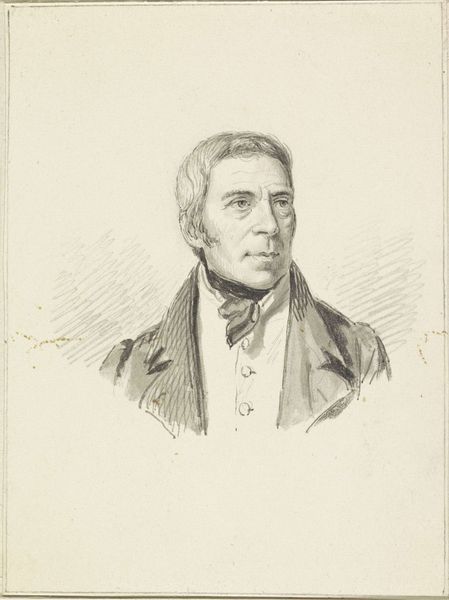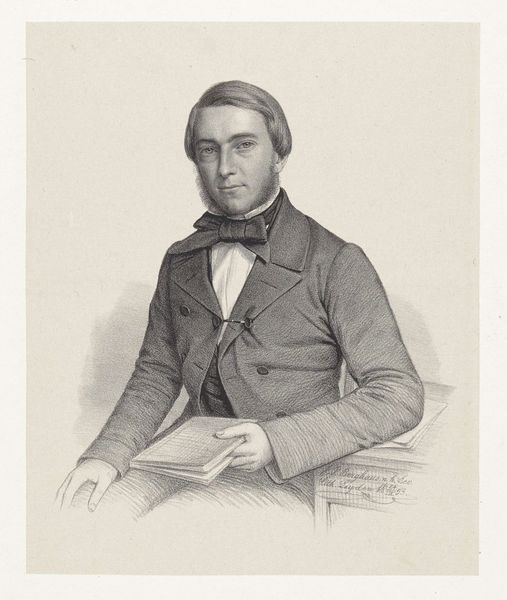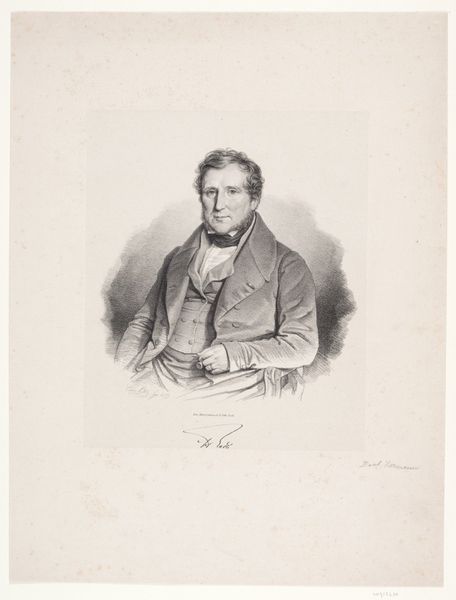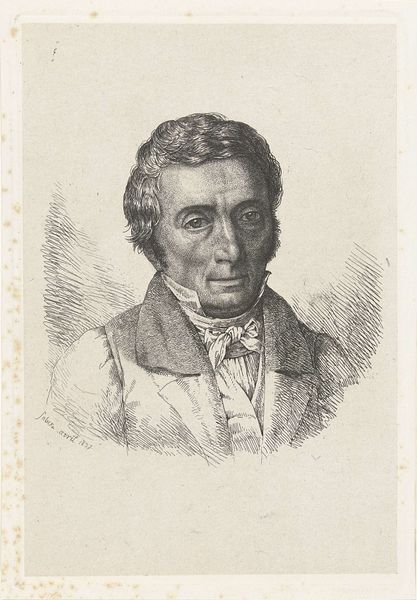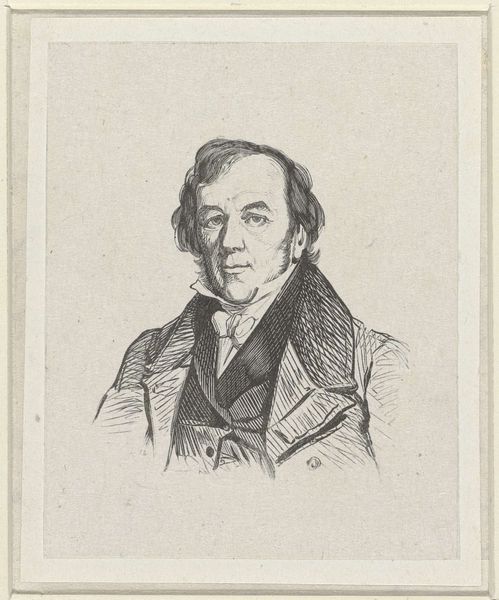
drawing, pencil
#
portrait
#
pencil drawn
#
drawing
#
pencil sketch
#
figuration
#
romanticism
#
pencil
#
realism
Dimensions: height 124 mm, width 87 mm
Copyright: Rijks Museum: Open Domain
Curator: This is a portrait of Antonie Waldorp by Coenraad Hamburger, created in 1841. It's a pencil drawing, a lovely example of 19th-century portraiture. Editor: The first thing that strikes me is the delicate use of pencil strokes; look at the layers creating texture on the jacket! You can almost feel the quality of the cloth. It's remarkable what he achieved with such a humble material. Curator: Indeed. Hamburger, though perhaps lesser-known today, was working within a specific tradition of Dutch portraiture. There was a strong demand for these images, as they often served as important visual records of individuals and their social standing within society. This portrait aligns itself with Romanticism as much as Realism, I think. Editor: You can really see that. It's about elevating pencil to a place beyond 'sketch'. The fine details like the ruffled shirt are all painstakingly rendered with layers of graphite, evidence of serious time and labor. How might Waldorp have participated, or paid for it? What was his place within that society you describe? Curator: Good point. Waldorp was himself an artist, a marine painter. Considering this context, perhaps this drawing represents a kind of artistic networking, a way for Hamburger to demonstrate his skill within artistic circles and elevate his own reputation? The exchange would have social currency and meaning. Editor: The intensity of the gaze is compelling—a powerful depiction captured through fairly simple means. Considering that these portraits became a form of accessible consumption within that artistic milieu, how widely distributed were similar artworks in that time? Curator: They would be primarily intended for family and close acquaintances. Prints would expand circulation slightly, of course. It speaks to the growing importance of imagery in shaping identity. We also shouldn’t discount the role that institutions played; art societies promoted and displayed such works, reinforcing artistic norms and expectations. Editor: It all adds another layer to a 'simple' pencil drawing! Looking more closely helps appreciate not just the artist’s technical skills, but all that effort that has been put into creating social meanings with available, ubiquitous material. Curator: I agree; these glimpses into 19th-century life give such a depth of understanding and nuance, don't they? I'm struck by how something so seemingly conventional tells a complex social and artistic story.
Comments
No comments
Be the first to comment and join the conversation on the ultimate creative platform.
